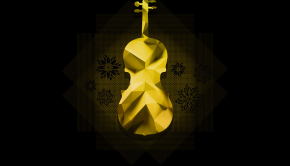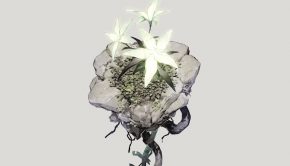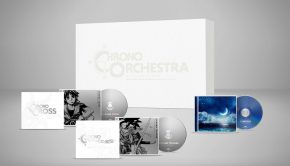Hisayoshi Ogura Interview: Our Most Extensive Interview
Hisayoshi Ogura is among the most long-standing and influential musicians in the games industry. Having joined Taito in 1983, he made numerous musical and technological innovations in a time dominated by superficial chiptune scores. He is particularly known for offering stylistic fusions in The Legend of Kage, pursuing conceptual avant-garde sounds on Darius, and exploring FM synthesis on The Ninja Warriors.
In our longest interview to date, Ogura discusses the inspirations behind each of his landmark projects. He places particularly focus on his four contrasting scores for the Darius series, before reflecting his wider roles in Zuntata as a sound director, album producer, and live performer. He closes by discussing his recent return to game music with the original score and arranged album for Darius Burst. It provides an incredible insight into the musician to newcomers and veterans of his work alike.
Interview Credits
Interview Subject: Hisayoshi Ogura
Interviewer: Don Kotowski, Chris Greening
Editor: Chris Greening
Translation & Localisation: Ben Schweitzer, Shota Nakama, Justin Pfeiffer
Coordination: Don Kotowski
Interview Content
Don: Hisayoshi Ogura, many thanks for speaking to us today. First of all, could you discuss your musical background, influences, and education? How did you ultimately end up joining Taito and scoring the Darius series?
Hisayoshi Ogura: I had admired the composers of kayoukyoku (the musical genre that preceded J-Pop), and the era that they created. My particular influence from that era was Kyouhei Tsutsumi-san. A complete professional, he would regularly turn out hits, and it was a great inspiration to me, still a student. But the world of music shifted towards a world focusing on the artists, and the kayoukyoku genre had died out. Like a heavy discount, the era had turned towards the cheaper music of J-Pop. At the time, I had graduated from college and studied music theory while teaching piano part-time. Although I had started composing at age 13, I could barely read or write scores. I thought that in anything, it is important to return to the basics and learn the fundamentals.
There was another thing that I had immersed myself in while I was working part-time. That was synthesizers. I had known nothing about them whatsoever, and as I discovered them I came to know how to operate them as well. In the 1980s, YMO [Yellow Magic Orchestra] burst onto the Japanese musical scene. They made a huge impact on me. Under their influence I began to work on synth music in earnest.
Just when I had prepared myself fully, I heard that Taito had posted a help wanted ad for a salesperson in the newspaper. I applied, and I told the people in the human resources department that I could compose music. Several days later I was taken to Taito’s R&D, because, as I found out, they had only just created a dedicated sound department, and happened to be seeking personnel that could compose. And then I had appeared unexpectedly. It was a miracle of timing both for myself and for the company.
But for the next two years, I had to write music for game after game every day. I was very busy and felt it difficult to create music that I could feel was my own, so I became somewhat bored. At that time the project Darius appeared. I told my boss directly that I wanted to work on this game if at all possible. I didn’t suddenly have any musical ideas that made me shout “aha” at the moment I was assigned to the project; I could only think about trying out a freer musical approach. I wanted something good, I began to think, but different from the typical shooting game. In the end, I spent 23 years creating video game sound (at times I also worked on sound effects) for Taito, on everything from the smallest scale projects to the largest. During that time, I founded the group known as Zuntata.
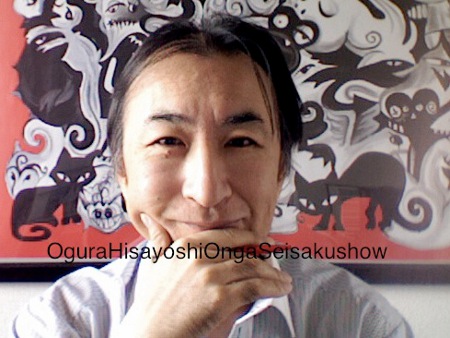
Don: The music you composed for the Darius series progressively became more experimental. While many series retain a similar style of music throughout, the Darius series transformed from a very melodic style (Darius) to a very experimental style that focused on ambience (G-Darius). What would you say was the impetus for the continual evolution of the music for the Darius series and can you reflect on what you consider the “Darius sound?”
Hisayoshi Ogura: As I have said in Japanese interviews, with the Darius series, I have composed music “with the game” rather than “for the game.” Of course, I work in the same style on other games as well. You could say that my impetus is fear. I always have a sense of fear whenever I work on a new project, because I understand that people’s expectations for new Darius music are high. At the same time, I feel strongly that players want a new kind of experience from the music as well. So I can’t simply compose the same kind of music as before. Having resolved to form a new kind of music, I feel a good deal of pressure.
It is meaningless to re-use the same methods when time after time you want to impart something new. And the work that it takes to carry this “freshness” to fruition is always accompanied by frustration and total fear. This continual struggle with fear is my source of strength. To me, the “Darius sound” is that conceptual, unusual sound that has evolved along with the series.
Don: Moving onto specifics about each game, let’s start with Darius. Could you explain your initial concept for what is essentially the birth of the Darius series’ music? Could you reflect on the decision to include unique boss themes for each stage and the inspiration for each of them?
Hisayoshi Ogura: Faced with this unprecedented game, Darius, I didn’t think at all about the physical concept or about the kind of music being written for shooting games at the time. This change came about when I saw the game at a trade show displayed with temporary music added in (the music was a piece called “CaptainNeo” from a game called Metal Soldier Isaac II). I was surprised by its overwhelming power, so much that I could feel it in my bones. (“CaptainNeo” ended up as the stage 1 theme in the game.) I didn’t end up with a complete concept; as a result of the experience at the show I had given it some thought, but I was still inexperienced. In the end, I composed with the idea of “a large existence” (that of both the giant bosses and the expansiveness of the universe) in mind. I think that the most precise expression of this simple concept was “CHAOS”.
“CHAOS” was completed very quickly, and for its time it was extremely avant-garde music. I assigned this piece the role of Darius‘s main theme. I’ll have them hear something no one’s ever heard in a game before! With these kinds of thoughts in mind, I composed a piece with the expressive scale of the beginning of the universe. Actually, while I was composing it, the piece was entitled “Big Bang.”
I can’t write about each individual theme here, so I’ll give my thoughts on the overriding sections. The stage themes emphasize melody, while for the boss themes I had in mind an animal instict and ferocity, a kind of aggressive vulgarity. I still consider melody when I compose. I can see, comparing my melodies from the 80s with those I compose now, that it is true that my way of thinking about melody has changed.
Don: The sequel, Darius II, also featured a very melodic focus, perhaps even more so than the original soundtrack. In addition, the style of the stage and boss themes differed greatly from the original. Could you explain the concept behind the overall direction of this soundtrack and why you chose to alter the style from its predecessor?
Hisayoshi Ogura: It all started with a passage in the Bible. Even though I am not a Christian, the Bible holds a certain fascination for me. (I will return to the objects of my interest in this way, by peering into their world to make new discoveries.) At the time when Darius II‘s production began, I was entirely lost. Should I follow up my work on the original, or should I do something entirely different? Normally, one would keep the main theme, write some new pieces, and call it complete, but since I wanted a fresh experience, something musically adventurous, I couldn’t simply apply that method. So I spent a long time wondering about what my concept would be.
Then I arrived at the Bible, which I had already had some interest in, and began to read the Gospel of John carefully. A particular phrase, “children of light,” made a strong impression on me. [John 12:36] So with a concept of “beloved of God” and my key idea of “the birth of children of light,” I looked at the game again. Within the music that was attached to the section when the player is going towards Jupiter, I distinctly remember having heard a voice saying “papa.” As a result, my overall concepts were collected in what became Darius II‘s main theme, “say PaPa.” Actually, in some of the pieces (not all of them), you can distinctly make out a sampled voice saying “papa” amidst the noise. When you come to the final screen, the noise dies down a little, and the voice can be heard clearly. (The voice is that of my daughter when she was very young.)
On the other hand, I tried to simplify the boss themes drastically. In other words, I limited the music to expressing violent ideas and fantastical ideas, and since it is adapted to each boss, the game’s music is easier to understand.
The second half of “sayPaPa” is overflowing with life. It is truly an expression of nothing less than the birth of a child of light. I believe that I brought a warmth to the game’s music. I can’t describe it very well, but I feel I created something that, in contrast with the typical fast tempo and mechanical feel of shooting game music, has a kind of gentle warmth. Although you could say that it’s a result of following my concepts, in the real world, I had recently become a father, and without a doubt that was an influential factor on both me and on my work.

Don: The Darius Gaiden soundtrack could be seen as a turning point for the music in the series. Rather than continuing with the classic sound established in the previous Darius games, the style would best be considered fusion. What was the impetus that spurred this drastic change in music styles? Could you reflect on your thoughts about the soundtrack and do you have any favorites?
Hisayoshi Ogura: In Jungian psychology, there is something called the archetype theory. To explain it briefly, the theory postulates that people, regardless of their nationalities, share access to a collective imagination, and their individual imaginations create based on the information that they add to it. Adding fictional elements to that philosophy, I came up with the concept of “VISIONNERZ.” Although it implies a meaning of “people who see illusions,” it is of course a word I coined myself. I didn’t simply come up with it, though; you could say that I came up with it under the influence of having read many books on Jungian psychology.
All people see illusions; from that perspective I was able to construct a very interesting world for Darius Gaiden. For example, what would happen if the crew on the Silver Hawk were convinced that there was a large boss without realizing that it is an illusion? Even what the player sees while controlling the Silver Hawk is an illusion. In this manner, a chain of illusions is constructed, and one will eventually go mad; the musical world of Darius Gaiden expresses this somewhat dark worldview. I kept these books on Jungian psychology on my desk at work, and after struggling with them for half a year, in 1994 I arrived at my concept. I’ll say it again, but this is a concept I came up with 16 years ago. I’d like to emphasize that it’s not something I have imitated at all since.
There are 15 tracks on the soundtrack, and about half of them have titles that come from terms used in Psychology. I turned Psychology into music. Or perhaps the music is a visualization of those concepts. You could say that Jungian psychology was the perfect subject to refine my fictional concepts.
On the final version of the main theme, “VISIONNERZ,” you can hear the voice of an opera singer. It was recorded in a studio before the piece was programmed in (at the sheet music stage). I had only written the melody of that section beforehand, and it was sung from a Karaoke monitor with a simple piano track. I wrote the lyrics in Japanese, and they were translated into Italian to fit the melody. In English: “What you can see with your eyes is not always the truth. The truth lies elsewhere.” The sung words mean something similar in Italian. And with the piece entitled “SELF,” Darius Gaiden comes to a close.
Don: The last Darius game you solely composed was G-Darius and it, too, also featured a different style of music from the predecessors. Adopting a much more ambient and industrial approach, it’s probably my favorite of the soundtracks. Could you please describe the process for composing this soundtrack? Would you say that this was the most challenging Darius soundtrack to compose? Could you please describe the process for composing this soundtrack and reflect on any favorites?
Hisayoshi Ogura: I spent a long time unable to come up with a concept for G-Darius. Every day was trying, and before I knew it, three months had gone by. Even so, I was still wandering around in a a deep fog, so I went out into the city to lift my mood. Having permission from the company, of course, I left the office and went outside. I was in the Shibuya district of Tokyo. Since I like looking at store displays and the ebb and flow of the streets, I walked while leisurely gazing about. And as I was waiting for the signal at an intersection, I had a thought. What would it sound like if I were to take the sounds of people walking, the announcements heard at regular intervals, the distant clamor of emergency vehicle sirens, all of the sounds from this exact moment and sample them as a five second loop? This 5 second loop, surely nothing more than urban noise, played back in my head before repeating again in another 5 seconds. I must have begun to feel a regular rhythm in this unconnected noise as I heard it repeatedly in my mind. The moment I came to that realization, I came to see the direction I would take with G-Darius‘s music. Anything can be made into music; anything can be made into an instrument. I was filled with excitement, but I still had nothing more than an idea.
To me, an idea in and of itself is unsatisfactory, an incomplete creation. I think you have to add spice before an idea can come to life. For days after my discovery that anything can become music, I searched for that spice. I found it on a TV science program. It was a phenomenon called “autoimmunity.” In an experiment they took fertilized chicken eggs and inserted what would become the brains of quail. They were born as chicks that had the cries of quail. They were chimera. The chicks’ immune systems began to attack the quail brains, and as a result they were unable to live for very long. In other words, the chicks’ immune systems (self) took the quail brain cells as enemies (other). Self and other. The co-existence of contrary entities. While watching TV, I took a nearby piece of paper, and I wrote down these things in a memo. I had finally found my spice.
The completed concept for the sound of G-Darius was “a music that fuses the organic and the inorganic.” By fusing the sounds of musical instruments (organic) with sounds not normally used as instruments (inorganic), I had begun the work of bringing this life (that sound) into the world. With all of the elements like cells inside my E-mu sampler, I waited patiently. I think that at that time I felt more like a scientist than a composer, conducting experiments. Just like a mad scientist. And my PC’s sequencer was my laboratory. The first specimen born from my laboratory was the piece called “B.T DUTCH.” It felt like meeting something completely alien, and it was terrifying. Although I wondered, isn’t the music I’ve been writing until now good, I will take these feelings as a green light and go for it. I gave the name “chimera music” to the music I wrote during that time, so the piece I created as G-Darius‘s main theme is called “Kimera II.”
I would like to add that, although the main feature of the Darius series is its giant bosses, I would emphasize their short-lived fusion of organic and inorganic materials over their size. It all fits the concept of the chimera.
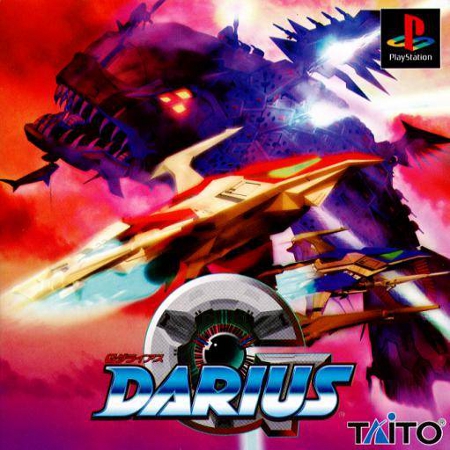
Don: Many people also consider the Darius series as the defining point for Zuntata. Could you explain how and to what extent the music in Darius influenced future Zuntata scores unrelated to the Darius series? Were the other composers that worked under you at Zuntata significantly influenced by your music?
Hisayoshi Ogura: I believe that the success of Darius led Zuntata towards works in which “all of the music is based on a specific concept.” And this was applied to sound effects as well, not just music. We would think deeply about what the fundamental ideas, the fundamental sound of each game, and come up with key concepts that would direct the production of music and sound effects. But that method of sound production was limited to the Zuntata of that particular era. Although we were proud of it, I think some of the members felt constricted by this method. They wanted to create more freely.
On the whole, I do not believe that our way of doing things was a failure. It allowed our individual views on music to grow. It also allowed us to bring forth a number of unique worldviews. I still believe to this day that, if Darius and its music had not existed, there would have been no way for Zuntata to continue.
Don: While you are best known for your Darius work, you have scored numerous other titles for Taito. One of your earliest works, The Legend of Kage, was famed for the way it hybridised traditional Japanese influences with a modern pop influence. From a compositional and technological standpoint, how did you approach this title and create such authentic sounds?
Hisayoshi Ogura: The Legend of Kage was expected to fail. But given the state of the company at the time, we felt that we needed to finish it anyway. So I was composing for a game that would have no way of being released. (In reality, things turned out very differently, though.) So I started composition feeling very little pressure. I thought it would be interesting to see how it would sound if I alternated between Japanese-style melodies and an octave bass in eighth notes. But to me, this by itself seemed too ordinary. I wouldn’t be satisfied if I had left it at that. I needed to challenge myself in some way.
They’ve decided that the game’s going to be scrapped, so I can create anything I want, I thought. So I decided to try out two new things. I wanted to express the sound of a katana striking another katana in music. Instead of simply mixing in sound effects, I wanted to express that sound in the harmony. I also wanted to recreate the sound of Simmons drums through FM synthesis. I don’t think I succeeded on either count. When the music was paired up with the images, I couldn’t decide whether it felt more like Pop or more like Japanese music. This is off topic, but I would like to add that all of the synth drum sounds I had created at this time were added to all of the games I worked on later. And then this “throwaway” game that I had been working on caught on, contrary to all expectations.
Don: Nevertheless, the music for titles such as Arkanoid, Rainbow Islands, and The New Zealand Storyresemble typical game music far more. What inspired the more conventional direction to these projects? Were they enjoyable to score or do you ultimately prefer working on more experimental projects?
Hisayoshi Ogura: I was the composer on Arkanoid, but on the other two projects, I was director, and did not do any composition. Although I tend to value a concept when I compose, please understand that this method cannot be adapted to fit any and all games. Attempting to turn all games into conceptual work can have an adverse effect. At these times, I will create “a game-like, fun sound.”
So that I can take full responisibility for my remarks, I’ll confine the discussion to Arkanoid. Arkanoid is a simple block destruction game. It doesn’t have any other special qualities to it, like unique graphics or special moves. Instead of being actively created, the game was fit into a pre-made template. Disappointingly, it turned out to be a big hit…
As long as corporate structure is in place, not every game will be a labor of love for its designers. It’s not as if such games are slipshod, but rather that they have no power. It serves to illustrate the fact that there is no shortage of examples in which something without power still manages to be effective.
Mr. Kimijima, who was in the sound department at that time, created Arkanoid‘s sound effects. We decided at the meetings that the game would rely more heavily on sound effects. The game’s unique ball bounce sound effect came about as a result. That sound effect stuck in the audience’s mind, and just from the sound, people could tell that there was an Arkanoid machine set up when they entered an arcade. We would always come to a decision, in this manner, about what we should emphasize in the sound design (whether sound effects or music or narration). I would like to add that this was the way things had occurred since before the creation of Zuntata.
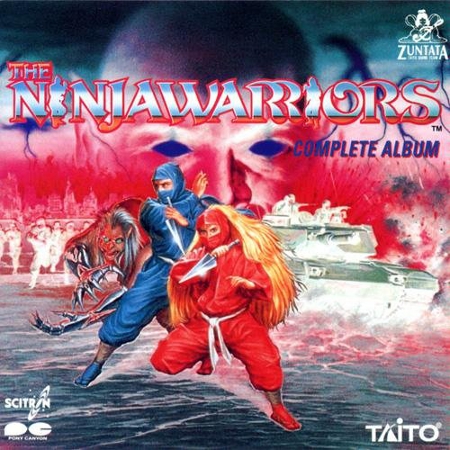
Don: The Ninja Warriors‘ soundtrack stands unique among your contributions at Taito and, indeed, game music in general. Could you elaborate on how you approached this score and what made it so impacting to gamers? To what extent did the new sound chip used on this title allow for more experimentation here?
Hisayoshi Ogura: It’s one of the games I will never forget working on. The YM2610 chip greatly expanded the range of expression for both music and sound effects. The Ninja Warriors was the first Taito game to use that model. To be able to change the pitch of sampled sounds was like a dream come true. I felt like I finally had a decent environment to work in. An idea to use the sound of a tsugaru-jamisen in a game at some point had been on the back burner for a while, so I think that this game appeared at exactly the right time.
The concept behind the main theme was to look at ninja the way they are seen in foreign countries. This superhero-like conception of the ninja, moving and flying about, seems extreme to the Japanese (this was in the era before the Internet, and we lacked the same wealth of information available today). I wondered, are my ideas about ninja wrong? I formed these doubts and these irreconcilable ideas into music, and the finished result was “DADDY MULK,” with its combination of synth sounds, tsugaru-jamisen, and a science fiction-like element, the vocoder. I found an effective outlet for these ideas I had had on the back burner in this game’s content.
I also tried different things with the sound effects. Since we were using a three screen cabinet, as withDarius, we were able to use a simple “body sonic” effect. But while in Darius, the “body sonic” effect is switched on when the player enters a boss stage, in The Ninja Warriors, we tried out a number of smaller effects like varying the strength of the response based on the size of an explosion and fade it in and out when a large object (such as a tank or a fighter) approaches and moves away. These contributed greatly to the flow of the sound during gameplay.
Another favorite effect of mine appears in the final name entry screen. Each letter that the player enters is read out by a vocoder. For example, if one enters “Square Enix Music Online,” a voice will say, “Thank you S-E-M-O.” From a technological standpoint it wasn’t difficult at all. I simply had to enter vocal data for each of the twenty-six letters of the alphabet into the vocoder and control it through progamming, but with this I was able to allow players to hear the final gasps of the ninja and kunoichi (since the game ends when they are caught in an explosion).
I also did a good deal of research on how to use the tone colors in FM synthesis. How to use effects such as delay and flanging in my composition, or how to alter an individual sound, while still retaining its beauty. For a concrete example, take the opening piece’s humming sound: I readjusted the envelope again and again. Personally, my favorite sound, and the one I think I did the best job on, was the opening of “MotherlessChildren.” I recreated the female “ahh” voice over and over again so that it could be heard. In order to achieve an “expression of ambiguity,” instead of keeping the speed on the LFO (low-frequency oscillator) constant, I used a number of subtle variations. By using a bend effect on the attack in addition to these changes, I was able to achieve a sound I could be satisfied with.
Don: Selections from Darius, The Ninja Warriors, and Stoic Romance proved very popular at live events, such as the Game Music Festivals and Zuntata Live. Could you share your memories of such events and what it was like to perform to enthusiastic fans? How did you develop the distinctive Zuntata sound for such events?
Hisayoshi Ogura: I was proud to perform, of course. Yes, I remember them proudly. The moment the intro to one of my pieces began and the cheers of the crowd grew, I would get goosebumps. Of course, there were also times when I had anticipated more of a reaction than I received, and to be honest, I would perform feeling disappointed. Many of the pieces were revised slightly — not just mine — and with daily practice, we were left with a heap of problems. I remember that there were many times when during practice I would become fatigued and have to rest on the sidelines.
The truth was that I wasn’t getting enough sleep. I would have to learn the other members’ pieces after returning home. But after an external staff took over direction of Zuntata Live, my various burdens were lightened somewhat. They would listen to the synth pads, octave doublings, and such at practice, and decide what was good and what was bad. I still only got four hours of sleep, though. (laughs)
But it wasn’t all bad. Once I had a small accident during a show, though I don’t remember when or where. It was the type of piece which keeps returning to a certain phrase throughout, and at one point I missed my cue during a long sequence of rests, so I didn’t know when to come in at all. But I had to play in harmony with the back-up keyboardist, karu. Everything would go wrong if I was off by even one bar. After my long rest, I went ahead and started playing on instinct. Right when I did so, I could see karu playing at the monitor at my feet and could hear the sound of the sequencer; instantly relieved, we played through to the end of the piece without any problems. In other words, there is no way I would have had that “feeling” if it hadn’t been for the practice. That I was able to get the timing of my entrance right is surely proof of my accumulated daily practice.
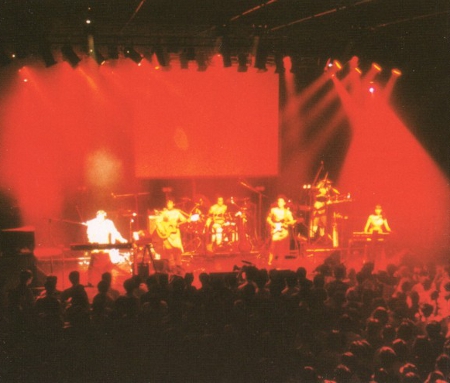
Don: As founder of Zuntata, you served as a supervisor and director for numerous soundtrack projects. What was it like to work with other composers and sound staff in this capacity?
Hisayoshi Ogura: I really enjoyed working on other members’ projects. There were members who would sing or provide narration, and I also took on a variety of roles. There were many times when I would provide new members with ideas, but I would respect their own wishes as often as possible. And then I would try to help them think about good ways to realize those ideas. I think there were some who would have preferred that I not get involved. When it came to the musical aspects, I would stay out; I hate to let my personal style influence others. Once I’ve decided that, I won’t get overly involved in a project.
I was involved with quite a few external staff, especially arrangers. In my case, I had to produce arranged CDs. I find it enjoyable to work in the music industry outside of video games as an arranger. Leaving out a few exceptions, I don’t arrange my own music. I feel that when I created the data for the piece, it is already finished. If I would arrange it again, it would be destructive, rather than creative, work. For that reason whenever an arranged CD was to be released, I would work with outside arrangers. I would ask them to use their own sense to uncover elements in a piece that I couldn’t see, and I would try to learn new techniques from them. In the end, I feel I gained a good many treasures this way.
I found Shinji Takahashi and Koutarou Horiuchi particularly stimulating. I would go to them and tell them about the concept and the story behind the music. Then we would have a conversation. I feel that when we communicated well, the arrangement would turn out better. I would point out sections I was worried about, and they would be changed until I was satisfied. That was the kind of relationship we had.
Don: In particular, could you discuss your experiences as sound director on Zoids Infinity and Exit?
Hisayoshi Ogura: My impression was that I didn’t have a very large role in Zoids Infintiy. My job was to give two talented people a concrete theme, which they would use as a starting point for composition. Although of course I did some of the composition myself, the development cycle was far too short, so I asked sayoko and Dr. Haggy to help out. Since the Zoids are made of metal, I decided that the music should be built on a brassy sound. We imagined that the brass calls were like the roaring of the Zoids. They each had their own very full careers and their own personal worlds. They paid attention to the themes and concepts that I had outlined, and I was satisfied to not raise unreasonable objections about details of measure placement or editing, to not ask “why does it have to be like that?” (I usually hate it when people take a finished piece and shorten it, or move what used to be its intro to a different section.) This kind of teamwork made the project go very easily. Unfortunately the soundtrack was not as well received as we had hoped, but perhaps after a few years have passed people will look at it differently.
I enjoyed working on the sound for Exit very much, as the game was very unique visually. I was the sound director for the project, but I also created sound effects and worked on compiling the music. I listened to the completed music and chose what to leave out. Since modern games process graphics very quickly and can transition from one screen to another in an instant, I thought that there was a need to pay attention to the manner in which the music progresses as well. Excessively lengthy intros are irritating to players. Just imagine, a player is beginning to move about a screen, and can you believe that the music is still in the middle of its intro? I certainly wouldn’t tolerate it. So for Exit I edited the intros to be as short as possible. Of course, I would show what I had done to the composers, and I would make sure I had their approval before continuing. When I was unable to meet face to face, I would send the files for approval, and I would do this for every piece.
I was also responsible for the characters’ voices. In many games, the voices of adult women are used for boy and girl roles. (At least, this is true in Japan.) I have always felt uneasy about this, and had long thought about someday breaking that convention. With Exit, I had my chance. I hired actual boys and girls to play the roles. They acted from their wonderful imaginations, and fulfilled a very special role in the game. But since it is such a natural thing and didn’t stand out, there are still many games around the world that use that unnatural convention.
In my role as a sound director, I worked on everything: music, direction and production of sound effects, editing, acting, and the selection of voice actors.

Don: At Zuntata, you also oversaw the development of the respected Zuntata Records label. Could you reminisce about your experiences at this label? How did you ensure your work for Zuntata was marketable and popular? To what extent were you involved in the direction of the label’s most ambitious projects, such as the Darius arranged albums?
Hisayoshi Ogura: First, I have to clarify something. I did create Zuntata, but the Zuntata Records label was launched by the company, and I didn’t do anything personally to establish it. Zuntata Records was thought of as being for Taito’s profit. So it would release something for any new title that came out, and as a label it’s a little bit ridiculous. This was from 1996 through 2000, I believe. I think you’ll know what I mean when I say that it’s not a “label” at present. Well, even when there were no new titles being released, the label had to put something out, so as a natural result, we turned to the hits of the past for new arranged albums, figuring that it would satisfy the fans. But even though the label was problematic in these ways, I poured my emotions into a good many projects.
This was true of my first new work for the Zuntata Records label, G-Darius. I consider what kind of design to use, how to order the tracks, and so forth. I don’t know about other people’s works, but for my own albums, I would never use the exact order that the music played in the game. If you think of it as a simple music collection, it could be natural for the stage 2 boss battle theme to be at the top. And yes, I went to Shibuya’s Hachiko crossing to record the urban noise that opens “B.T.DUTCH.”
Next, Gallery, the best album of my career, took a terribly long time. Basically, I just had to choose what I thought was my best work, but I also felt like I should choose music that the fans liked, so I made my selections from within that pool. Since about half of the album was newly arranged, it isn’t simply a compilation of earlier material. I would go over to the arranger’s studio seven days a week, checking on the current state of completion, making requests, and providing ideas. If any of you happen to have a copy of Gallery, take another look at the letters spelling out the title. I think you’ll notice that every letter uses a different font. It is a complete album, designed down to even these tiny details, and it is the best album of my career with Zuntata.
And then there’s one other compilation I can’t forget: Darius Premium Box -Rebirth-. The box, whichincluded Darius, Darius II, Darius Gaiden, and G-Darius, took what is likely an unprecedented amount of time and effort. Every bit of it had to be planned and financed from scratch: the DVD video, the miniature LP, and the tri-screen ballpoint pen. It all had to be completed quickly and carefully, and in all there were more than twenty people on the staff.
There was a meaning for each of the included bonuses. Darius was released at a time when the primary audio medium was changing from the record to the CD, so I felt we should have a miniature LP. There are bits of the handwritten sheet music from the time of production printed on the inside of the case; these are the orchestra hits from the main theme “CHAOS,” the phrase that has left the biggest impression on me. On the tri-screen ballpoint pen, player 1’s score is 198600 and player 2’s score is 199700; taking away the zeros, these numbers become the year of Darius‘s release, 1986, and the year of G-Darius‘s release, 1997. With the Darius obsession running through the company, we decided to find out if getting such a score was even possible, and we ended up finding that what we had printed was indeed feasible. This is all to say that nothing in the box was simply invented. It was, after all, the Darius Premium Box -Rebirth-. It goes without saying that all of the tracks were remastered as well.
Don: At the end of 2009, Darius Burst, the first Darius game since G-Darius, was released on the PSP. Although you are considered the father of the Darius series, you only had a minor role, while the current Zuntata team composed most of the soundtrack. Could you reflect on your contributions to theDarius Burst and what it was like to compose for the Darius series once again after so many years? If you were given the opportunity to have scored Darius Burst by yourself, what would you done to evolve the music from that heard in G-Darius?
Hisayoshi Ogura: When I heard about Darius Burst from the Taito sound team — that is, the current Zuntata — they told me to do a number of the pieces, if possible. But due to other projects in progress, I had to tell them I couldn’t possibly do all that they were asking. I’m not the type to take on multiple simultaneous jobs, but when I told them this, the staff (the composers) insisted. I found out that they only wanted me to do the GreatThing theme. A supporting role? No problem! Whoever composes the music for the whale section is under a lot of pressure. In the past, I had expressed concepts in my music for the series, so I felt this time I would try to express Darius Burst in this one piece.
The title of the GreatThing theme, “Hello 31337,” has three meanings. First, in order to have arrived at this boss, the player would have to have cleared a great number of challenges. So it’s a welcome, expressing respect for excellent players as the epic battle with GreatThing begins.
Next, in 2009, a certain event sowed the seed of anxiety in Japan. This seed was the regime change. [In 2009, Japan’s Liberal Democratic Party (LDP), which had held power for decades, was defeated in elections by the Democratic Party of Japan (DPJ).] I included this current of sarcasm towards politicians, people wondering “what have these so-called elites done for us?” Even though it’s not directly related to the game’s content, it’s not uncommon for me to adopt the spirit of an era when composing.
Finally, there is the meaning of “prime numbers.” I can’t explain exactly why, but a prime number has no factors except itself and one, and similarly, Darius demands a unique kind of music. You could say that their individuality is their common denominator. On top of that, a conjecture called the Riemann Hypothesis is famous within the world of prime numbers, and I have heard it said that solving the mystery of prime numbers may be the key to solving the mystery of the creation of the universe, so I adopted this as another key concept. The numbers in “Hello 31337” spell out elite in LEET (ELEET = 31337), and I was even more intrigued to find that it was a prime number.
It had been 12 years since I had composed for the Darius series, and composing as a freelancer having left Taito, I was able to see the game from a new angle even while going through the same difficulties. If I had composed all of the music, I think would have created another uncommon worldview, noisy and lo-fi. 😀
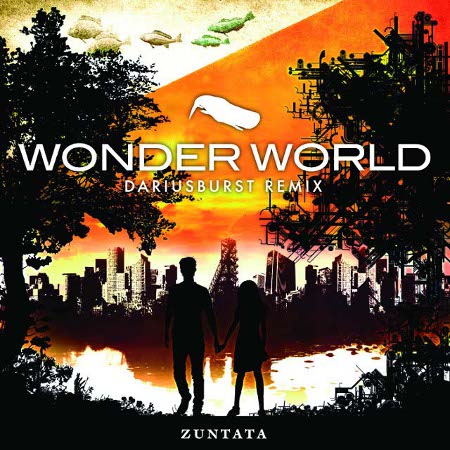
Don: You also participated in the Darius Burst Remix -Wonder World- project with a variety of other arrangers. What do you consider the unique challenges that come with arranging someone else’s music? Can you give us any insight into the approach you took on your arrangement for this album?
Hisayoshi Ogura: Cooking up someone else’s piece is a very delicate operation. The most difficult decision is how the original melody will be heard. There are people who will entirely ignore the original and freely “compose,” and there are people for whom the opposite is true. I think that in an “arrangement,” one should respect the original melody above all. I used three methods in Wonder World.
First, shortening the lengths of the notes in the melody. My arrangement, “Unable to Comprehend,” is based on a very abstract, short and simple piece. The tempo was very leisurely, so to fit a faster tempo, I shortened the length of each note. But as much as I could, I generally didn’t add anything to the notes, that is, to the melody.
Second, composing the latter half. The original was very short, and since I sped up the tempo, my arrangement was even shorter. Splitting it up generally, the first half is the original melody, and the second half is a newly composed melody I added; I think in this way I was able to show respect for the original.
Third, using sampled elements. When I first listened to the original, “Calm down,” I felt it resembled a certain passage from “Visionnerz.” So I sampled “Visionnerz” in “Unable to Comprehend,” taking the phrase that resembled “Calm down” and the phrase in “Visionnerz” that it resembled, and used them so that they could be heard together. This is the part when the chords and melody of “Calm down” are used with the voice singing “close your.” (This is at approximately 1:05) Sampling these different pieces that happen to resemble each other, they intertwine naturally and thus “Unable to Comprehend” was born. Personally, I call this method “W-music.” [In Japan, the letter “W” carries a connotation of “double.”] W denotes the initials of Wonder World as well.
This is changing the topic, but as I’m sure you know, the album is comprised of two halves, “Breath of a Human” and “Breath of a Machine,” which contain arrangements of the same music in different ways to fit their respective themes. My arrangement was on the “Breath of a Machine” side, and I always had its opposing track “Bonds,” in the back of my mind while working on “Unable to Comprehend.” I tried to work in elements of my side’s theme as well. So up to 30% of the instrument pads used in the arrangement are from an iPhone. As a symbol of what we have lost in interpersonal communication in our modern age, I used the sound of a cell phone…
Don: Although you used to work as Taito, you started your own studio. What are the reasons for your recent absence in the game music industry until now? What would you consider the goals of your new studio and what kind of projects do you want to work on in the future. Is there any particular style of music you aim to create with this studio?
Hisayoshi Ogura: For me, the process and the result are everything in my creative work, and in the widest possible sense, it is a show. I wonder, are games a show as well? Other types of creative work are shows. I believe that I can put on a show, even if just a little bit. Although the expression is somewhat vague, I am thinking about going about music production in that sense of a “show.” Without thinking about the genre, if I may say so, I would like it to be a refinement of “my style of music.” I would be happy to put on a new show, not limited to video games.
Don: Thank you for talking to us today, Hisayoshi Ogura. Is there anything else you’d like to say about your works past, present, and future? In addition, would you like to leave a message to your fans around the world?
Hisayoshi Ogura: I would like to extend my gratitude to everyone who listens to my music to this day. I am thinking that I want to evolve. Perhaps this thought has led me from the past to the present, and will lead me through future as well. I think that for a creator, to rest on one’s laurels is equivalent to creative extinction. So I will continue to compose music (not limited to video games), always with an eye to the future, always with a new form.
I would like to create music that one or even two hundred thousand people will love ten or even twenty years from now, just like Darius and The Ninja Warriors are.
Thank you. OguraHisayoshiOngaSeisakushow
Many thanks to Don Kotowski for contributing the majority of the questions, Shota Nakama and Justin Pfeiffer for translating them, and Ben Schweitzer for interpreting the extensive answers.
Posted on April 25, 2011 by Don Kotowski. Last modified on March 19, 2014.


